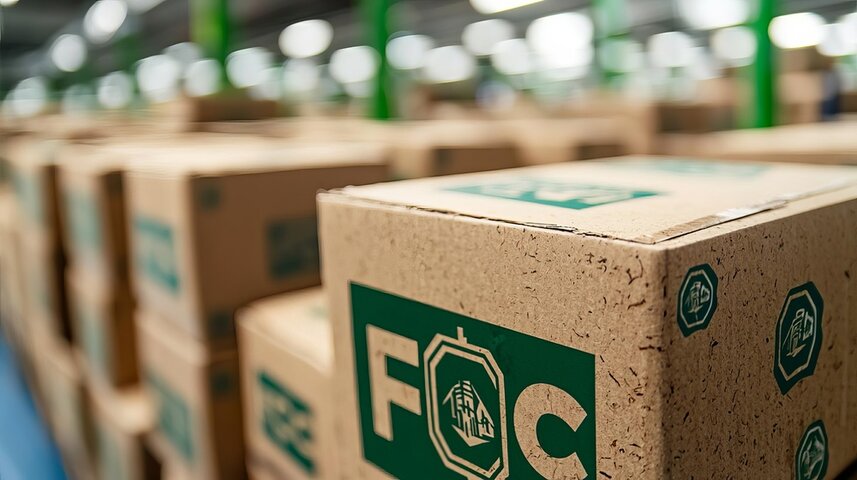
When looking for the best sustainable forest certifications for paper industry, FSC, PEFC, and SFI stand out as leading options. These best sustainable forest certifications for paper industry are crucial for producing paper responsibly. They ensure that paper is sourced without damaging forests and help reduce the risk of overharvesting trees. Research shows that FSC, one of the best sustainable forest certifications for paper industry, has strict standards and carefully tracks the origin of paper, which helps prevent illegal logging. While PEFC and SFI are also among the best sustainable forest certifications for paper industry, they may not have as rigorous checks as FSC. Choosing the best sustainable forest certifications for paper industry helps protect forests and demonstrates your commitment to the environment, building trust with environmentally conscious consumers.
Key Takeaways
Pick certified paper to help keep forests healthy and safe from being cut down.
FSC certification is trusted most. It has tough rules and many environmental groups like it.
PEFC and SFI certifications are good too. They may not check as strictly as FSC.
Always look at certification labels. This helps you know if products really help the environment.
Think about what matters to you when you pick a certification. Make sure it matches your promise to care for the planet.
Why Certification Matters
Environmental Impact
When you pick certified paper, you help protect forests. Sustainable forestry helps stop deforestation and keeps nature healthy. If paper is not certified, it can cause big problems:
Chemicals from making paper can pollute water.
Waste can hurt soil and animal homes.
Cutting down too many trees can harm animals and change the climate.
Burning fuels in factories can make the air dirty.
Certifications push companies to care for forests. They use ways that keep water, soil, and air clean. When you buy certified products, you help the planet.
Responsible Sourcing
Good forest care starts with knowing where paper comes from. Certifications make sure companies use good forestry and do not break the law. New tools help watch and check forests. Here is how certification helps stop illegal logging:
| Mechanism | Description |
| Virtual Reality and GIS | These tools watch forests and find illegal acts with clear pictures. |
| Blockchain Technology | This keeps track of every step, so you can see where things come from. |
| Monitoring Supply Chains | Groups check how much product is made to spot illegal logging. |
| Risk-Based Auditing | Auditors look at company risks to make sure rules are followed. |
You can trust certified products come from good sources and help the earth.
Consumer Trust
You want to buy things that fit your values. Certifications show you care about forests and the planet. Many people want proof that products do not hurt forests. They want to know where things come from and how to throw them away. Most people pick certified products if they are good quality. Good marketing helps you choose well and feel sure about what you buy.
Tip: Check for certification labels on paper to help forests and stop deforestation.

Leading Certifications
FSC
FSC certification is on lots of paper products. It sets high rules for protecting forests. FSC helps keep animals and plants safe. It also protects water and people’s rights. Workers and Indigenous Peoples are treated fairly. FSC checks every step from forest to product. The Chain of Custody keeps certified and non-certified stuff apart. Here is a table with main ideas and benefits:
| Principle | Focus Areas | Key Benefits |
| Environmental Impact | Biodiversity, water protection | Reduced ecological footprint |
| Community Relations | Worker wellbeing, fair pay | Social responsibility |
| Indigenous Rights | Legal recognition, territory respect | Cultural preservation |
| Legal Compliance | Laws, treaties | Regulatory adherence |
FSC helps you support forests and stop deforestation.
PEFC
PEFC certification is also used for paper. You see PEFC in many places. It fits local needs in different countries. PEFC supports good forest care and sourcing. Its quality depends on each country’s rules. PEFC is on many products because it covers a big area. It helps you pick paper that protects forests.
PEFC works with local groups to make rules.
You get choices with PEFC, but check the rules in each country.
SFI
SFI certification is found in North America. You see SFI on paper from the US and Canada. SFI focuses on caring for forests and stopping deforestation. It uses different rules to check paper sources:
| Criteria | Description |
| Fiber Sourcing Standard | Meets latest rules for sustainable sourcing |
| Pre-Consumer Recycled Content | Uses recycled materials before consumer use |
| Post-Consumer Recycled Content | Uses recycled materials after consumer use |
| Certified Forest Content | Comes from certified sustainable forests |
| Non-Controversial Sources | Avoids sources with environmental or social problems |
SFI helps you support good forest care in North America.
Other Schemes
There are other certifications for paper. Some are for certain places or special needs. These include:
Canadian Standards Association (CSA)
Malaysian Timber Certification Scheme (MTCS)
American Tree Farm System (ATFS)
You should pick certifications that match your goals. Each one helps you choose better paper and protect forests.
Best Sustainable Forest Certifications for Paper Industry

Image Source: pexels
Credibility
You want to trust these certifications. FSC is known for strong credibility. Groups like Canopy Planet and Sierra Club support FSC. FSC does not allow companies with bad practices. FSC uses strict Chain of Custody systems. This helps you trace certified products. SFI gets criticized for being close to the industry. SFI does not check as strictly as FSC. Some groups warn you about SFI. SFI sometimes puts business first. SFI allows clear-cutting and logging in old forests. This causes worries about deforestation. PEFC does not block companies with poor records. You should check local rules before picking PEFC. When you look for labels, FSC gives the most trust.
FSC: Strong support from environmental organizations
SFI: Industry-funded, less strict, possible greenwashing
PEFC: Depends on local rules, less exclusion of risky companies
Standards
You need clear standards when choosing certifications. FSC, PEFC, and SFI set rules for forest care. FSC uses global standards and works with local groups. This helps protect forests managed responsibly. PEFC uses standards for each country. PEFC trains workers on safety and caring for nature. SFI focuses on North America. SFI sets rules for water, animals, and biodiversity. You can see the differences in this table:
| Certification | Key Differences | Approach | Socioeconomic Considerations |
| FSC | Controls raw materials from managed forests | Global standards | Promotes dialogue with stakeholders |
| PEFC | Tracks eco-sustainability and traceability | Country-specific standards | Trains forestry workers |
| SFI | Focuses on supply chain and stewardship | North American standards | Sets principles for social values |
FSC and PEFC help you find certified products with high standards.
Deforestation Risk
Deforestation is a big worry when picking certifications. FSC works hard to stop deforestation. FSC checks High Conservation Value areas to protect them. FSC has a strict cut-off date. Land cleared after 1994 cannot be certified. SFI and PEFC do not require these checks. PEFC uses a later cut-off date of 2010. This means more risk for deforestation. FSC asks for consent from Indigenous peoples. PEFC does not always do this. FSC blocks companies with repeated violations. PEFC does not have clear rules for suspensions. SFI allows some risky practices. This can lead to deforestation, so be careful.
FSC: Strong rules against deforestation, protects key areas
PEFC: Later cut-off date, less strict on violations
SFI: Allows risky practices, less protection for old-growth forests
Social Impact
You want certifications to help people and forests. FSC leads in social impact. FSC protects labor rights and Indigenous rights. FSC also helps community relations. PEFC supports social and economic functions for workers. SFI sets rules for social values. Some groups say SFI does not do enough. You can compare social criteria in this table:
| Certification System | Social Criteria Addressed |
| FSC | Labor rights, indigenous rights, community relations |
| PEFC | Socioeconomic functions and conditions |
| SFI | Social values through principles and objectives |
FSC helps you support communities and fair treatment for workers.
Chain of Custody
Chain of Custody helps track certified products. You want to know your paper comes from good forests. FSC has the strictest Chain of Custody rules. You can trace every step from forest to product. PEFC also has tracking rules. These rules change by country. SFI keeps Chain of Custody certification. SFI’s system is less strict than FSC. The table shows the differences:
| Certification | Chain of Custody Requirements | Source |
| FSC | Registered to FSC Standard for Chain of Custody Certification | FSC |
| PEFC | Chain of Custody of Forest and Tree Based Products – Requirements | PEFC |
| SFI | Maintains SFI Chain of Custody certification | SFI |
FSC gives you the best way to trace certified products.
Practical Factors
You need practical tips when picking certifications. SFI covers the whole supply chain. SFI focuses on water, biodiversity, and wildlife habitat. FSC offers standards for many regions. FSC works with NGOs to protect nature. PEFC teaches forest owners and certifies most forests worldwide. PEFC builds partnerships for responsible sourcing. When you pick certifications, think about your location. Think about your supply chain and your goals.
SFI: Good for North American supply chains, focuses on stewardship
FSC: Best for global standards and ecological health
PEFC: Largest global reach, strong education for forest owners
You can choose the best certification by looking at credibility, standards, deforestation risk, social impact, chain of custody, and practical factors. These certifications help you protect forests, support communities, and make sure your paper comes from good forests.
Choosing the Right Certification
For Producers
You help protect forests and stop deforestation. If you want FSC, PEFC, or SFI certifications, you must follow certain steps. These steps help you track materials and show your paper comes from good places. You need to keep records and make sure everyone follows the rules. The table below explains what you should do:
| Step | Description |
| 1 | Get Chain of Custody certification by buying and tracking certified material. |
| 2 | Send in your artwork and get permission to use the certification logo. |
| 3 | Track what you buy and check you use the right material. |
| 4 | Write down all steps for audits and keep records for 5 years. |
| 5 | Use Standard Operating Procedures (SOPs) for the whole shop to follow the rules. |
| 6 | Make a checklist that shows all steps for each job. |
| 7 | Have everyone sign the checklist to show they followed the SOPs. |
You might face problems like high costs, not knowing what the market wants, and fights over where to harvest. You need to learn about safe harvesting levels so you do not hurt forests or cause deforestation.
For Buyers
You want your paper to come from forests that are cared for and do not cause deforestation. You can check if products are really certified by doing these things:
Look at your certificates to see if they are real.
Use the FSC Public Certificate Search to check the company name or license code.
Make sure the certificate is 'Valid' and not expired.
Check that the product you bought is certified by the company.
Look at invoices for FSC claim codes.
Use the PEFC 'Find Certified' tool to check the certificate and product.
More people care about the environment and want products that help stop deforestation. Online shopping has made it more important to have sustainable packaging, so you should look for certifications that fit these needs.
Tip: Always check for real certifications to help the planet and stop deforestation.
Decision Guide
You need an easy way to pick the best certification for you. Multi-criteria analysis helps you compare choices using different factors. You can use methods like analytic hierarchy process (AHP) or analytic network process (ANP) to decide what matters most, like stopping deforestation, helping people, or meeting market needs.
Write down what is most important: deforestation risk, social impact, cost, market demand.
Score each certification with a simple system.
Pick the certification that matches your goals and values.
Note: Your choice affects forests, people, and the future of the planet.
FSC, PEFC, and SFI all help protect forests in different ways. FSC has very strict rules and works hard to stop deforestation. PEFC and SFI are used in different places but their rules are not as strict. Good certifications help you keep forests safe and use paper responsibly. They also help people trust your choices.
FSC takes out companies that hurt forests from its supply chain.
Certifications make sure forests are checked and protected.
Outside groups check certifications to keep things fair and honest.
Pick the certification that fits what you want. Always look for clear rules and strong steps to stop deforestation.
FAQ
What does a sustainable forest certification mean for paper products?
A sustainable forest certification means forests are cared for well. This label tells you the paper comes from forests that protect animals. It also shows the forests keep water clean and help people.
How do you check if a paper product is certified?
You can find a certification label on the package. You can also go to the certification website and search for the company name or code. This helps you make sure the product is certified.
Why do companies choose different certifications?
Companies pick certifications based on where they are. They also think about what customers want and how they get their paper. Some certifications work better for selling in many countries. Others match local rules or focus on certain environmental goals.
Can you trust all certification labels?
You should look at the label and check it online. Some labels look real but do not follow strict rules. Trusted certifications have clear rules and regular checks to keep forests safe.


























